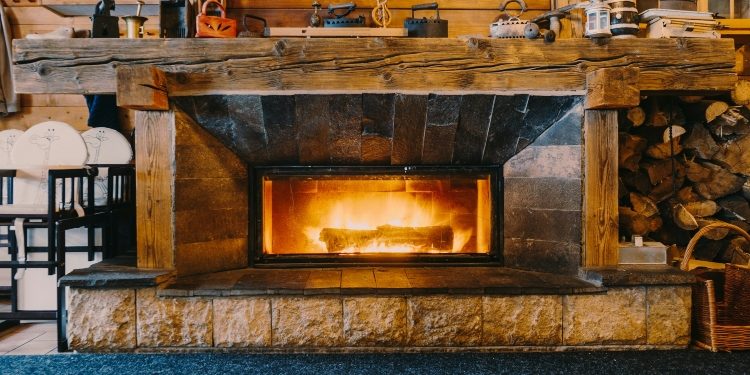Not merely for warmth, the fireplace and its array of accessories have been central to British home life, reflecting the era’s design and the homeowner’s status. Among these accessories, andirons, fenders, and bellows hold particular intrigue, each with its unique history, function, and aesthetic appeal.
The Historical Significance of Andirons
Andirons, also known as fire dogs, have been an essential part of the fireplace ensemble since the medieval period. These sturdy, horizontal bars are designed to hold firewood off the ground, improving air circulation for a better burn and minimizing smoke. However, andirons are not merely functional; they are also decorative, reflecting the artistic trends of their time. From the simple, wrought-iron designs of the Tudor period to the elaborate, ornate versions of the Victorian era, andirons have been a canvas for craftsmanship and style.
The evolution of andirons in Britain is a testament to changing tastes and technological advancements. In the 17th and 18th centuries, brass became a popular material for andirons, adding a touch of elegance to antique fireplaces and reflecting the candlelight in grand homes, as read here at https://www.thornhillgalleries.co.uk/ . By the Victorian era, andirons often featured intricate designs with animals, mythical creatures, or heraldic motifs, serving as status symbols as much as functional items.
Fenders: Protecting and Decorating the Hearth
Fenders are another key component of the traditional British fireplace, serving the dual purpose of safety and decoration. Sitting at the front of the fireplace, fenders prevent hot ashes and sparks from escaping onto the floor, protecting the home from potential fire hazards. But like andirons, fenders also offer an opportunity for embellishment and personal expression.
In the 18th and 19th centuries, fenders were crafted from a variety of materials, including brass, iron, and later, steel. The designs ranged from simple, polished guards to elaborate creations adorned with repoussé work (a metalworking technique where the design is hammered out from the reverse side), engraving, and even semi-precious stones. The fender’s size and complexity often reflected the owner’s wealth and social standing, with more opulent examples found in the mansions of the aristocracy.
Bellows: Breathing Life into the Fire
Bellows have been an indispensable tool for managing the fireplace since ancient times. By directing a stream of air towards the fire, bellows make it easier to ignite or rekindle flames, ensuring a steady, warm blaze. Traditionally made from wood and leather, these devices are a blend of functionality and artistry, often featuring carved designs and decorative tacks.
In Britain, bellows were common in homes of all sizes by the Tudor period, symbolizing the household’s hearth and heart. They were frequently passed down through generations, becoming cherished family heirlooms. The designs varied widely, from the purely functional to the highly ornamental, with some featuring painted scenes, inscriptions, or the family crest.
The Evolution of Fireplace Accessories
The development of fireplace accessories in Britain is closely tied to the broader trends in domestic architecture and interior design. As homes evolved from the open-hall medieval structures to the more compartmentalized and refined spaces of the Georgian and Victorian periods, so too did the fireplace and its accoutrements. The Industrial Revolution introduced new materials and manufacturing techniques, allowing for more elaborate and varied designs.
Moreover, the fireplace’s role in the home changed. What was once a purely utilitarian feature became a focal point for family gatherings, a symbol of domestic comfort and hospitality. This shift is reflected in the increasing ornamentation and diversity of fireplace accessories, which became as much about aesthetics as about function.
Collecting and Preserving Antique Fireplace Accessories
Today, antique fireplace accessories are prized by collectors and enthusiasts for their beauty, craftsmanship, and historical value. Preserving these items involves understanding their materials and construction, as well as the appropriate cleaning and conservation techniques. For instance, brass andirons require different care than iron ones, and preserving the original patina is often a priority.
The resurgence of interest in traditional home décor and the charm of period features have led to a renewed appreciation for antique fireplace accessories. They not only serve as functional items for those with working fireplaces but also as decorative pieces that add character and a sense of history to a home.
This exploration into the world of antique fireplace accessories—specifically andirons, fenders, and bellows—reveals their significance beyond mere functionality. In Britain, where history permeates every corner, these items offer a tangible connection to the past, embodying the evolving tastes, technological advancements, and social customs of their times.
Modern Appreciation and Use
While the practical necessity for andirons, fenders, and bellows may have diminished with the advent of central heating, their aesthetic and historical value endures. These accessories now find a new lease on life in modern homes, where they serve as decorative nods to the past. In Britain, especially, where the preservation of heritage is a national passion, integrating such antiques into contemporary living spaces creates a dialogue between the old and the new.
Designers and homeowners alike treasure these accessories for their ability to add authenticity and character to a fireplace setting. A set of Georgian andirons or a Victorian fender can anchor a living room’s decor, serving as a focal point that inspires the rest of the interior. Similarly, ornately decorated bellows can be displayed as works of art, their craftsmanship admired up close.
The Collector’s Journey
For collectors, antique fireplace accessories offer a rich field of discovery. Each piece tells a story, not just of its own craftsmanship but of the homes and lives it once graced. Collecting these items requires a keen eye, a deep appreciation for history, and an understanding of the nuances of style and material.
Key to this journey is the authentication of pieces. Given their age and the variations across periods, distinguishing a genuine antique from a reproduction is crucial. Experts recommend focusing on craftsmanship details, material quality, and provenance where available. Auction houses, antique fairs, and specialized dealers are primary sources for finding authentic pieces, offering opportunities to see a wide range of items and to learn from seasoned experts.
Care and Conservation
Preserving the integrity of antique fireplace accessories while accommodating them within a modern home presents unique challenges. The key lies in balancing their decorative appeal with the need to protect and conserve their historical value. Regular, gentle cleaning, appropriate environmental conditions (avoiding excessive humidity or dryness), and minimal alterations are fundamental practices.
For those intending to use these antiques as part of a working fireplace, it’s important to consider their material and condition. While many andirons and fenders are robust enough to serve their original purpose, some may have weakened with age and are better suited for display only. Consulting with a conservation expert can provide guidance on how to best use and preserve these items.
Integration into Contemporary Interiors
These pieces can complement a wide range of interior styles, from the classic elegance of traditional decors to the eclectic charm of modern eclectic spaces. The key is in selecting pieces that resonate with the homeowner’s personal style and the home’s architectural features.
In a contemporary setting, a minimalist approach can highlight the unique beauty of an antique fender or set of andirons. Conversely, in a more traditionally styled home, a collection of fireplace accessories can add depth and authenticity to the decor.
David Prior
David Prior is the editor of Today News, responsible for the overall editorial strategy. He is an NCTJ-qualified journalist with over 20 years’ experience, and is also editor of the award-winning hyperlocal news title Altrincham Today. His LinkedIn profile is here.












































































